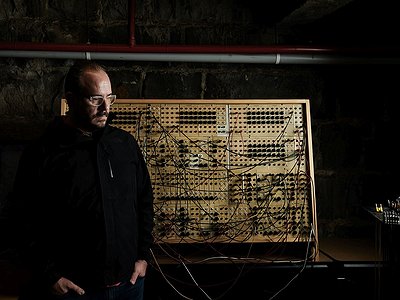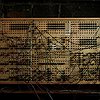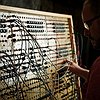Name: Ben Carey
Nationality: Australian
Occupation: Composer, improviser, producer
Recent release: Ben Carey's Metastability, composed and performed entorely on the 1975 La Trobe Serge ‘Paperface’, is out now via Ben's personal bandcamp profile.
Tool of Creation: Serge Paperface
Type of Tool: Modular synthesiser
Designed by: Serge Tcherepnin, Rich Gold, Randy Cohen
Years produced: 1975
Country of origin: America
If you enjoyed this interview with Ben Carey and would like to stay up to date with his music, visit his official website. He is also on Instagram. If you are interested in his other projects, we highly recommend his duo project Sumn Conduit with vocalist Sonya Holowell.
What was your first encounter with the Serge Paperface?
I had been working on Eurorack modular systems for a while, but in 2018 I spent a couple of sessions at MESS Ltd (Melbourne Electronic Sound Studio) exclusively on their 1975 Serge Paperface system, originally built for the La Trobe University Music Department 1975. It was a challenge to get my head around, but an endlessly fascinating instrument. I came away feeling like I’d only scratched the surface of its capabilities.
I have since been in residence at MESS a few more times and worked exclusively on this machine, both for recording music for release, as well as preparing a performance.
Just like any other piece of equipment, the Serge Synthesiser has a rich history. Are you interested in it? And if so, what are some of the key points from this history for you personally?
I find the history of the Serge interesting, but I’m no historian! Serge is a very inspiring musician and designer, who is still alive and designing circuits to this day. His designs came to prominence during a very specific period and place in electronic music history, on the west coast of the United States. He worked with Morton Subotnick, and had access to Don Buchla’s designs of the 1960s/70s.
He began making his instruments in the early-mid 70s, and my understanding is that the early Paperface systems, in order to keep the costs down, were built both by Serge and by those purchasing them. It was a sort of collaborative approach.
Serge’s designs may be described as typically ‘west-coast’, in that they privilege complex sequencing, distortion/waveshaping and randomness, as well and an open approach to synthesis architecture.
What, to you, are some of the most interesting recordings made with the Serge synthesiser?
There are many artists who specialise in the Serge, but my favourite Serge artist has to be Thomas Ankersmit, especially his albums Homage to Dick Raaijmakers and Perceptual Geometry. He has a way of making feedback sound alive, as well as creating these monumental spaces that his sounds exist within.
[Read our Thomas Ankersmit interview about the Serge]
As for the La Trobe System specifically, the Australian artist David Chesworth was one of the first to spend time with this system, back in the mid-70s when it arrived at La Trobe. His album The Unattended Serge / Five Evolutionary Things, released in 2014 of late-70s recordings on the instrument, is a classic.
What interests you about the Serge Paperface in terms of it contributing to your creative ideals?
Speaking specifically of the early paperface designs, I love how elemental they are. Serge’s design philosophy was centred upon his notion of ‘patch-programmability’, which saw him revealing low-level functions of his circuits to the musician.
This is inspiring, because for me, complexity is built from the interaction between many low-level processes, and these machines give you this in abundance. Each module can have multiple functionalities, depending on the way you patch it. For instance, what we usually experience as a rising and falling envelope or ramp function, needs to be patched up from scratch, with a positive slew linked to a negative slew …
Whilst this may feel cumbersome to some, for me, patching at this low level I feel a part of the network of complexity as it grows. Having to continually make these low-level decisions that make you think about different forms of configuration, leading to vastly different musical outcomes up the chain.
What are some of the stand-out features from your point of view?
Speaking of the La Trobe system at MESS, firstly the sheer size of the system. Working with it, I felt engrossed in it, both physically and mentally.
There was also clearly a logic built into the choice of modules, and current layout. 6 oscillators, 6 filters, 6 gates, 4 sequence / programmer combos, each with 3 outputs making 12 sequenced CV sources, tonnes of mixing, etc.
The sound of the filters stand out for me, as does its capacity for feedback.
Prior to using it for the first time, how did you acquaint yourself with the La Trobe Serge? Will you usually consult a manual before starting to work with a new device – and what was that like for the this system?
I was a modular user before tackling the Serge, but the Serge workflow was very new to me. The names of the modules and their functions, the various patch-programmable options etc. were quite opaque, so it required some pre-study. Especially seeing as it’s not my own, and I knew I would have a finite amount of time with it.
There’s a famous Serge manual from 1976 that I found online, and plenty of archived resources explaining the modules and their functionality, much of which was written by Ken Stone, the designer / engineer who restored the La Trobe system.
I enjoyed this as an intellectual challenge, it meant that sitting down at the instrument I could focus on making music, rather than sitting there scratching my head!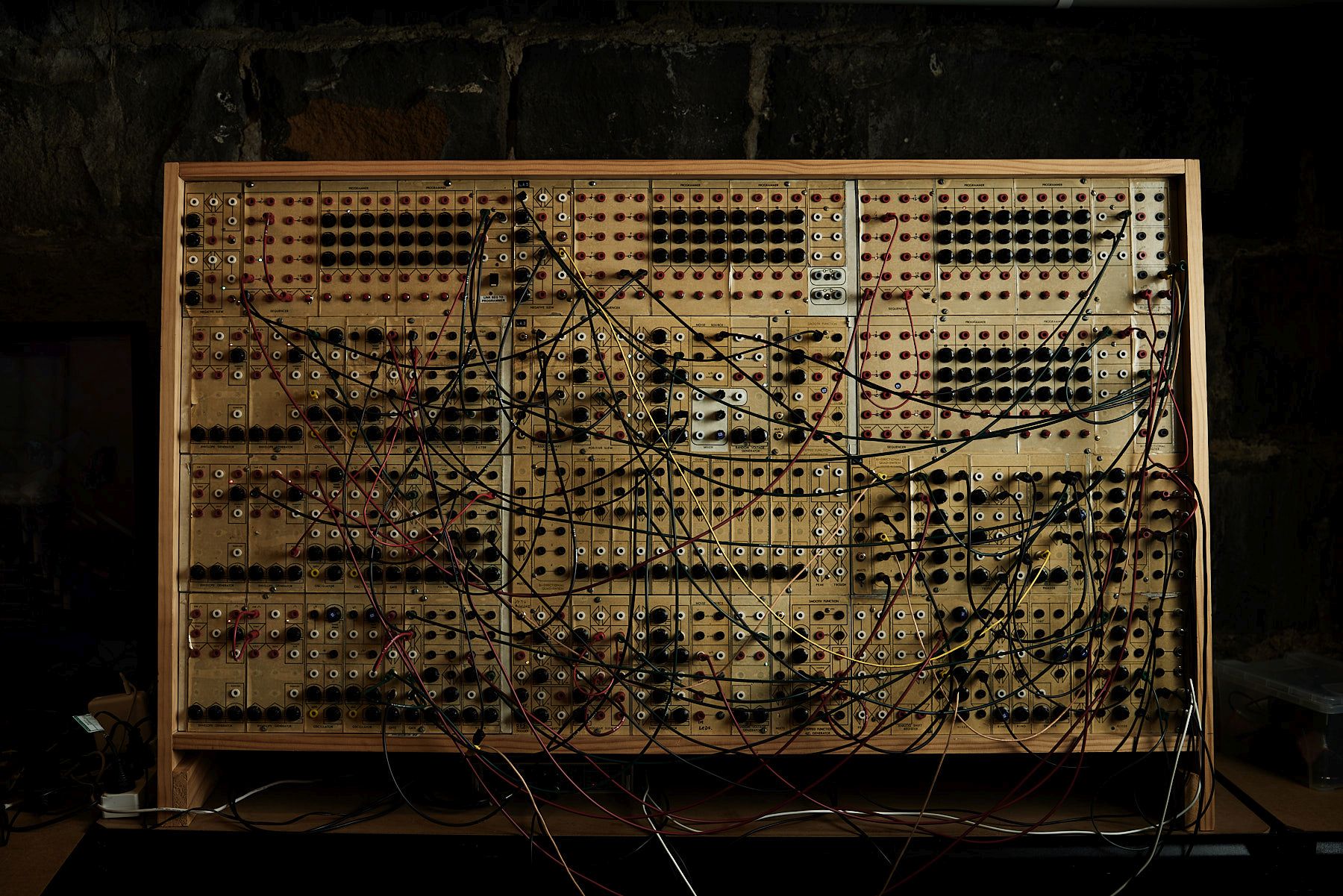
Serge Paperface Image by Kristoffer Paulsen
Tell me a bit about the interface of the La Trobe Serge Paperface – what does playing it feel like, what do you enjoy about it, compared to some of your other instruments?
The machine resembles an old telephone exchange, or more precisely, an analogue computer. Think of dials, switches and cables. There is no keyboard, or gestural interface to speak of.
Whilst dials and switches can be manipulated live, there’s a lot to manage, so I tended to create these complex patches, relying on sequencing and automation, which I then nudged with dedicated controls, or sometimes playing the sequencers by hand. I really enjoyed building these complex patches, and then sitting atop the chaos and piloting the processes I’ve just built.
Submixing has been a very important part of my interaction with it, as there are many audio mixers in the system. Whilst this is how I like to interact with other modulars, I usually also have gestural controllers and more manual control for live performance.
How would you describe the sonic potential of the La Trobe Serge Paperface?
Vast. It can go from precise, clear and detailed textures to full-blown chaos, depending on the way it’s patched.
That said, Serge systems in general tend to have a particular sound, owing to the sound of his oscillators, and his gorgeous, liquid-y filters. The 1973 filter and oscillator combos that are in this system are magic together.
I focused a lot on the percussive and tactile / dynamic qualities of the machine as well … the gates, or VCAs (voltage-controlled amplifiers) produce a heavy, in your face punch to them, and pinging the filters, especially when frequency modulated, gave some incredible woody tones.
In which way does the La Trobe Serge Paperface influence musical results and what kind of compositions does it encourage / foster?
I can’t speak for others, but for me, the openness of Serge’s designs influences the way in which I think about composition and performance. It’s not neutral, as with any instrument.
I think the complexity of a system like this, and its vast potential, has led me to quite a maximalist approach which favours multiple layers, and various types of control pushing and pulling on each other. But there is something to be said about the context in which I was working with this particular machine, that is, in a series of 4-day intensive residencies.
Since these sessions, I’ve been able to build up my own Serge system which sits in my small home studio. Whilst there are some similarities with the workflow, the luxury of time to experiment, keep a patch up for a longer period, re-record, etc., leads to quite different results. 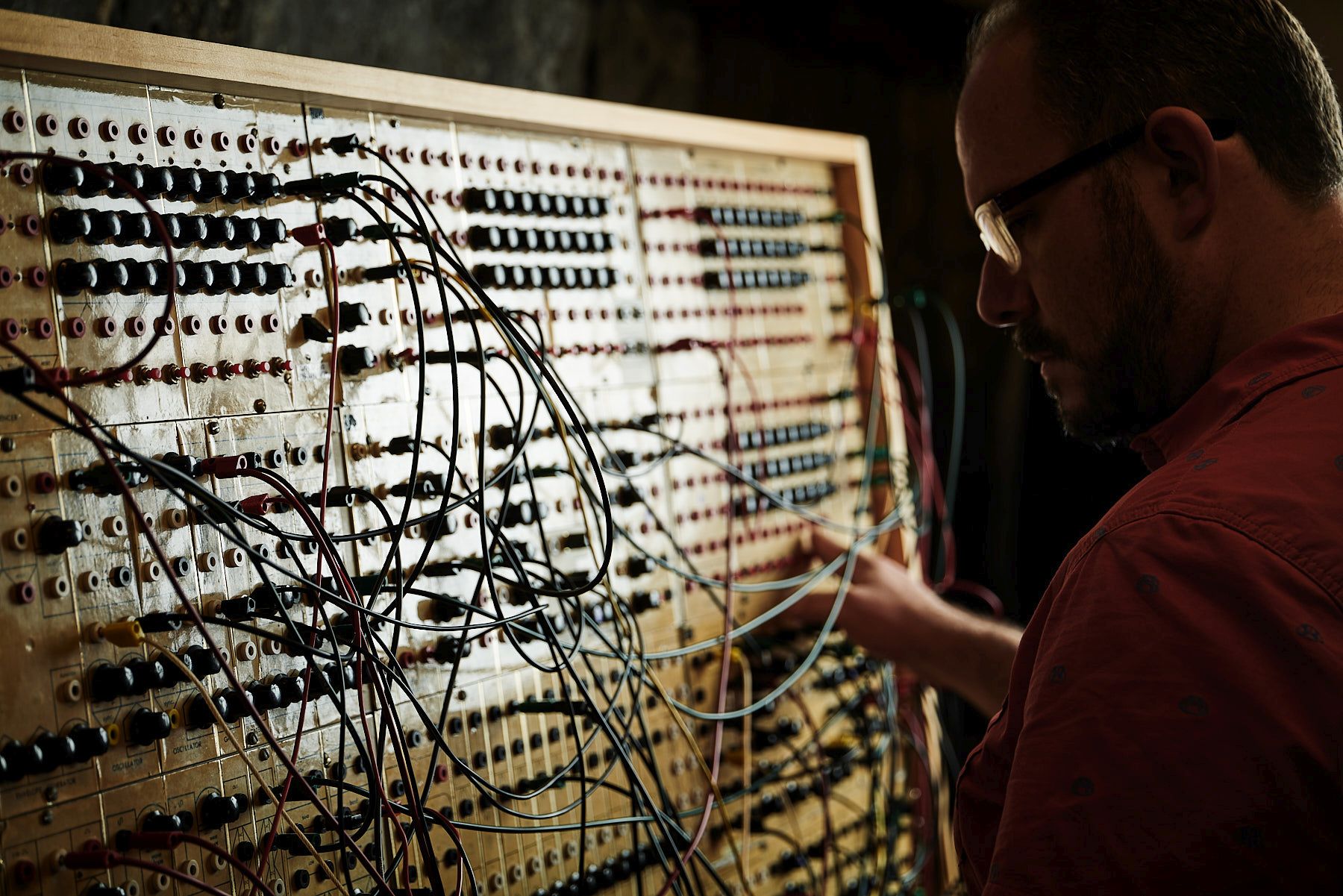
Ben Carey & Serge Paperface Interview Image by Kristoffer Paulsen
Could you describe working with the La Trobe Serge Paperface on the basis of a piece, live performance or album that's particularly dear to you, please?
I wrote my latest album, METASTABILITY on this system, and also prepared an octophonic surround sound performance on it of the same name. The recording and practice sessions I did at MESS on this instrument were incredibly formative.
METASTABILITY was recorded over two residencies in 2019 and 2021, both four days long. I spent 8 or so hours a day with the system, building patches, large and small, recording, listening and playing the instrument. In 2019, I recorded many smaller, initially unrelated layers, that I later used in a montage-style approach in the studio. This was a real challenge, coming back and finding the sonic relationships between these materials, many months later.
In 2021, my focus was more on building larger, more integrated patches, that I would record as performances, more or less. In 2022, preparing for my performance, I weaved in pre-recorded elements of METASTABILITY with one master patch on the system, which I performed with the aid of a Max patch for mixing and spatialisation in 8 channels.
How does the La Trobe Serge Paperface interact / complement / conflict with some of the other tools in your studio?
Ha, I wish I had this instrument in my studio!
Whilst I don’t have the La Trobe system at home, my own Serge system, the ‘Kameruka’ Serge, is mostly a standalone instrument that I route through some analogue hardware and straight into my recording interface. I use a stereo spring reverb, compressors and EQ on the chain, but I don’t tend to connect it to software or any other sequencers or modular systems.
Although I have, on occasion, performed with both my Serge system and my Eurorack modular, I tend to keep their sounds and processes separate, treating them as distinct instruments with their own character and function within a performance.



